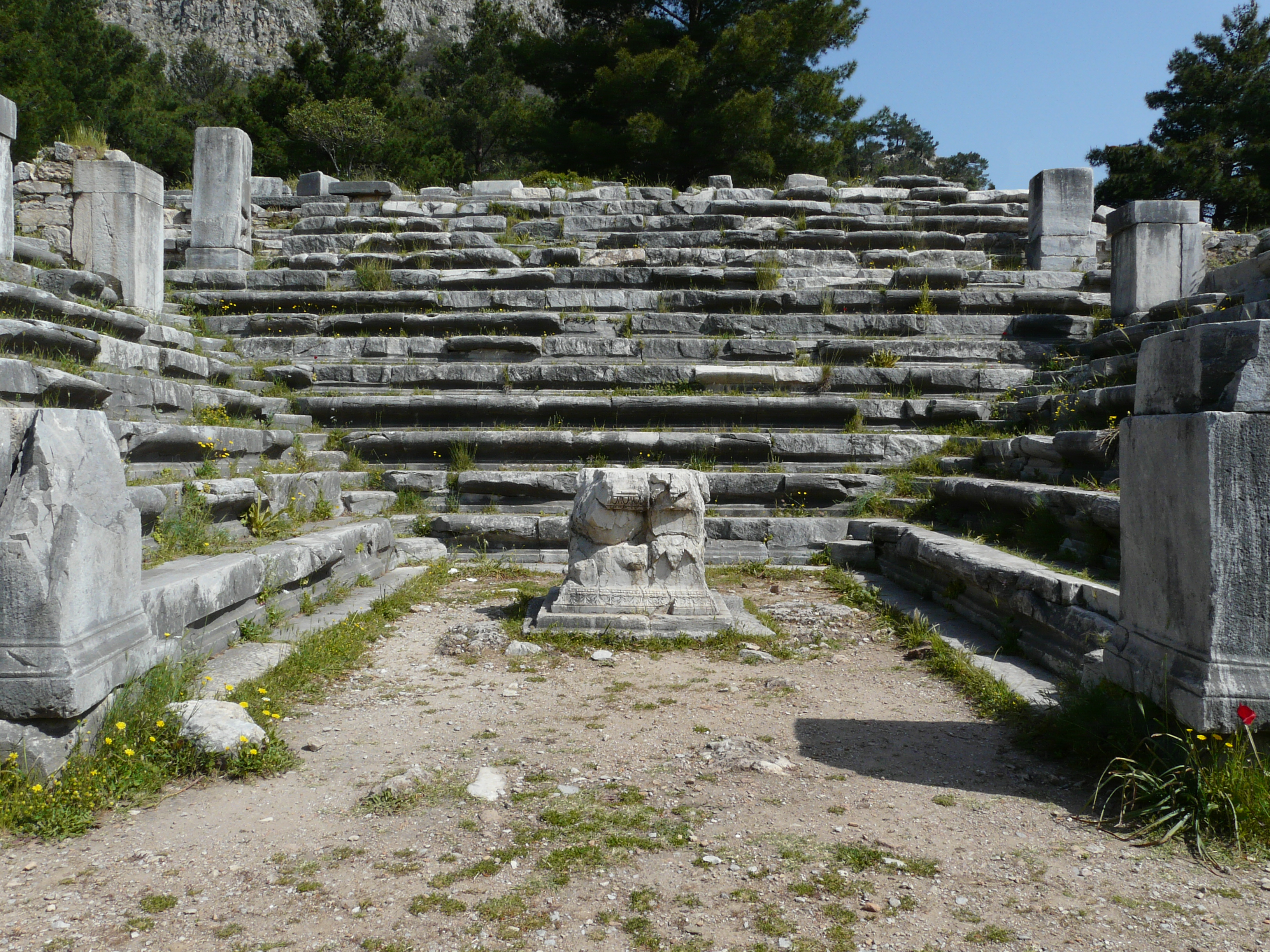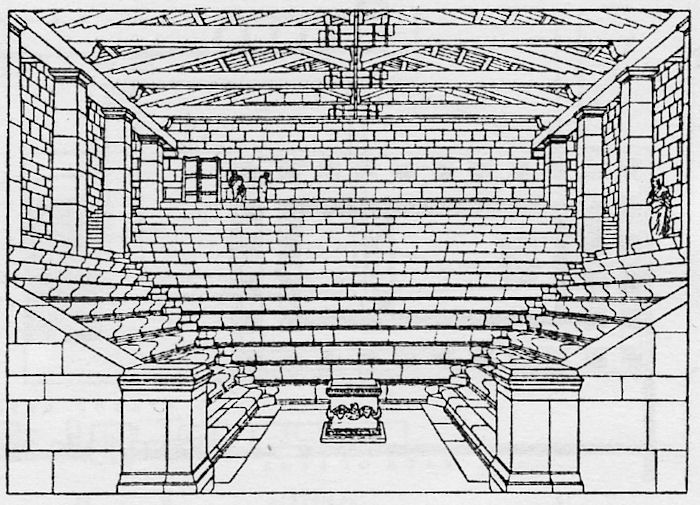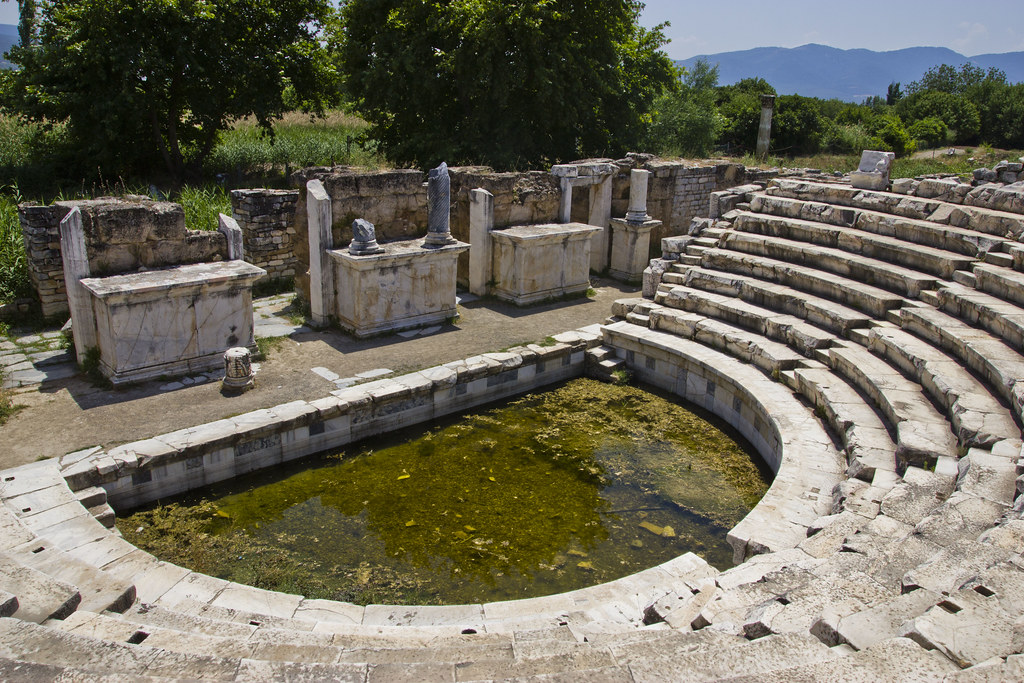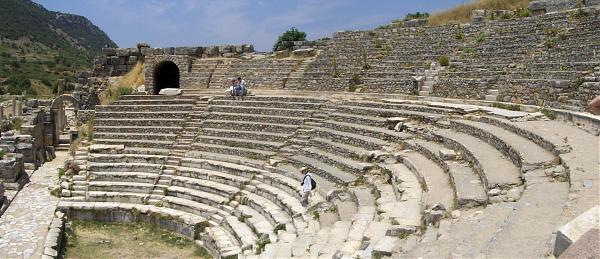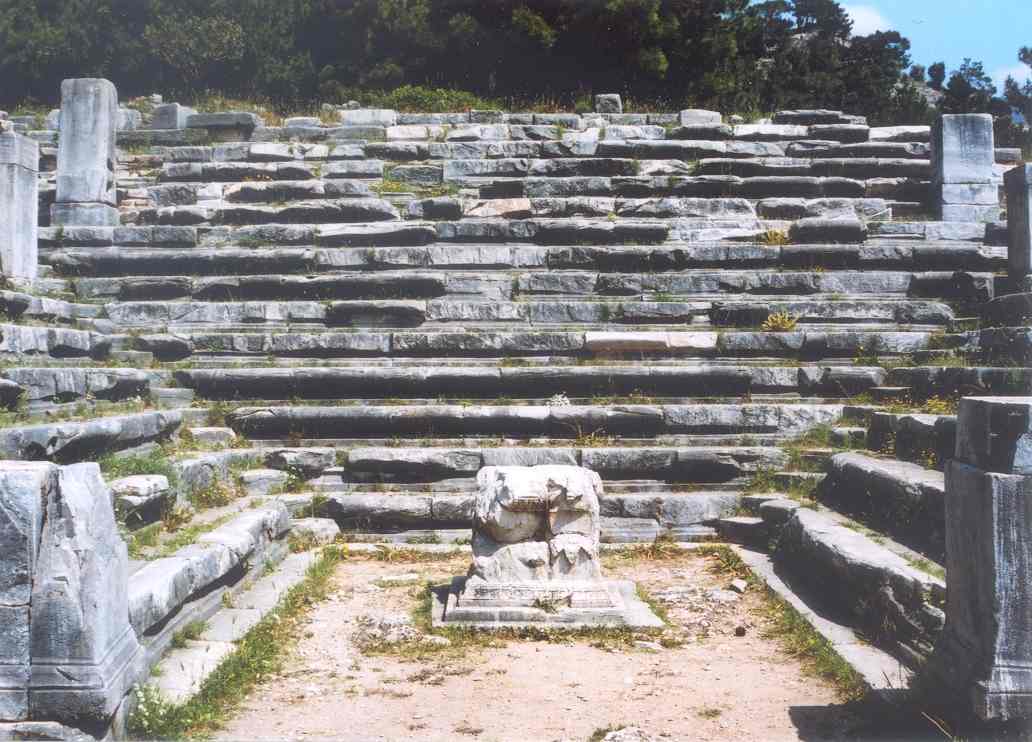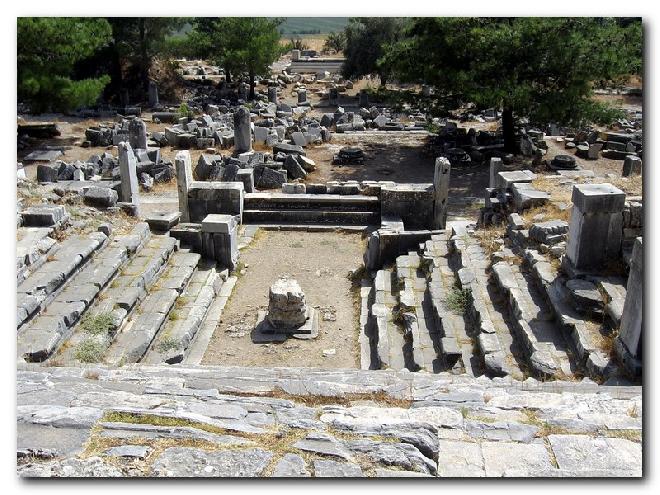Bouleuterion
A Buleuterion (Greek: βουλευτήριον ), and in German sometimes transcribed as bouleuterion, in the city states of ancient Greece was the meeting room of the Bule, the Council of the city. The People's Assembly ( Ekklesia ) gathered in contrast, the much larger Ekklesiasterion.
Had the most applied on a rectangular plan building often inside the form of a small theater hall, with rising rows of seats around a central or upstream lecture area. The rising rows of seats could be arranged in a semicircle ( Miletus ) or rectangular ( Priene ). But there were simple solutions, in which ground-level bench or chair series served as a seat.
As most of these were quite large rectangular buildings, the narrow sides quickly reached only about 15 m wide, had columns or column positions are arranged in the interior. They helped the enormous ancient standards for spans of the roof structure to overcome.
Often Buleuteria were provided with elaborate entrance solutions or with porticoes combined ( Miletus ). As a representative buildings of the cities they rose most central and prominent in the townscape.
Apart from those already mentioned, there are remains of former Buleuterien find for example in Apollonia, in Delphi ( with Doppelapsiden ), Ephesus, Iasos, Delos and Olympia. In the Agora of Athens, an old and a new Buleuterion were identified.

